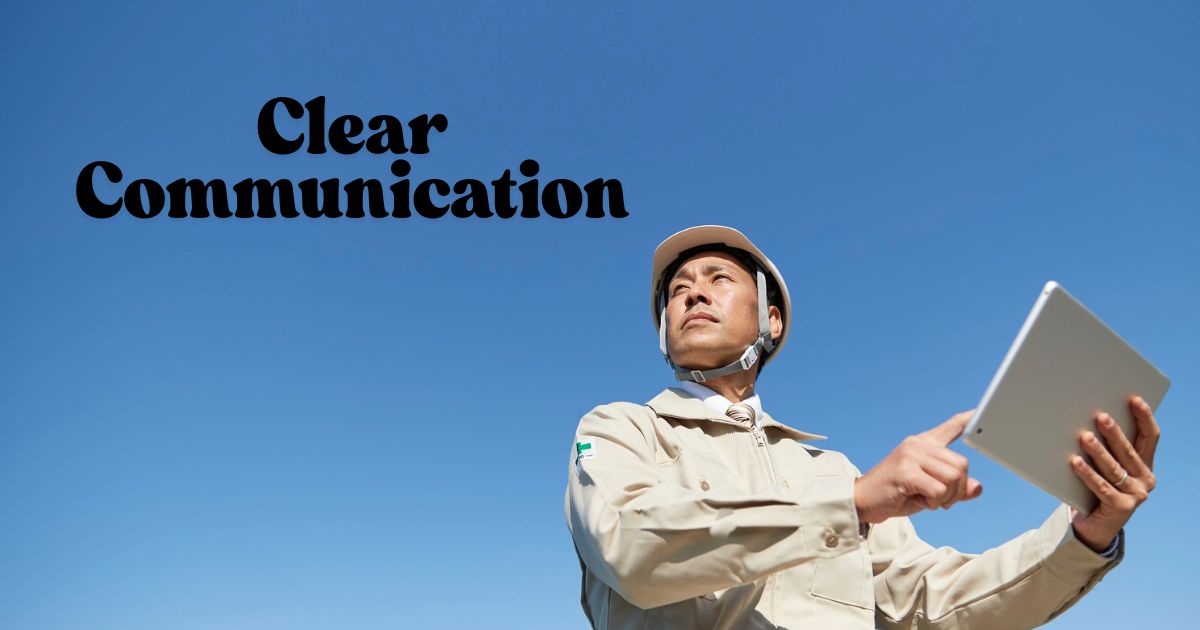Clear communication isn’t just helpful, it’s essential. Imagine how many problems could be avoided if everyone shared their message clearly. Whether you’re chatting with friends or leading a team at work, clear communication cuts through confusion and stops misunderstandings before they start. When you express your ideas and feelings clearly, people listen, and that builds trust fast.
In every setting, from casual talks to professional meetings, clear communication is the secret to success. It powers teamwork, fuels honest discussions, and keeps everyone on the same page. Without it, messages get tangled, frustrations rise, and progress stalls. Mastering clear communication means stronger relationships and sharper messages. Ready to discover phrases that capture this vital skill? Let’s dive in and unlock the true power of clear communication.
Other Ways to Say “Clear Communication”
Clear communication can take many forms, such as articulate expression, transparent dialogue, or straightforward communication. Each phrase highlights a different aspect, whether it’s precision in messaging, open communication, or unambiguous exchange. Using these alternatives helps convey your message clearly and avoids confusion or misinterpretation in various settings.
1. Articulate Expression
Example: “Her articulate expression during the presentation helped the team understand complex topics without any misinterpretation.”
Meaning: This phrase describes the ability to convey ideas and feelings coherently and precisely, emphasizing clarity in communication.
Usage: Ideal for situations in personal or professional settings where clear, precise speech is crucial for understanding.
2. Transparent Dialogue
Example: “The team relied on transparent dialogue to resolve conflicts and build trust.”
Meaning: Open and honest communication without ambiguity, fostering honesty, openness, and mutual understanding.
Usage: Best for conflict resolution scenarios and environments where trust and transparency are key.
3. Straightforward Communication
Example: “Straightforward communication saved time during the project by delivering direct messages without confusion.”
Meaning: Direct, to-the-point communication that enhances efficiency and reduces the risk of misinterpretation.
Usage: Useful in professional and practical contexts where clear, quick message delivery matters.
4. Unambiguous Exchange
Example: “The contract was an unambiguous exchange of terms, avoiding any possible misinterpretation.”
Meaning: Communication that is clear and specific, leaving no room for confusion, especially important in legal or formal situations.
Usage: Perfect for legal contexts, formal agreements, and any scenario demanding precision and clarity.
5. Lucid Conveyance
Example: “His lucid conveyance of instructions made the educational content easy to understand.”
Meaning: Clear and simple expression of ideas, ensuring everyone in an educational or professional setting follows along.
Usage: Ideal for instructions, training, and contexts where understanding complex topics matters.
6. Effective Communication
Example: “Effective communication is the backbone of excellent customer service and team collaboration.”
Meaning: Purposeful exchange of information that achieves intended results through clarity and openness.
Usage: Applicable broadly, especially in customer service and organizational cultures that value clear messaging.
7. Concise Messaging
Example: “The marketing campaign used concise messaging to deliver a quick, impactful message.”
Meaning: Brief but comprehensive communication that avoids unnecessary words while maintaining clarity.
Usage: Often used in advertising and marketing strategies where capturing the audience’s attention quickly is essential.
8. Crystal-clear Communication
Example: “For successful collaboration, crystal-clear communication ensured absolute clarity in all discussions.”
Meaning: Communication free from any confusion, emphasizing transparency and clear intentions.
Usage: Crucial for teamwork, especially when accuracy and avoiding misunderstandings are a priority.
Read More: 12 Other Ways to Say “Positive Reinforcement”
9. Open Communication
Example: “Open communication fosters a positive work environment where feedback and discussion are encouraged.”
Meaning: A receptive and inclusive style of communication that promotes honesty, participation, and trust.
Usage: Perfect for organizational cultures that value inclusiveness and continuous dialogue.
10. Precision in Messaging
Example: “Precision in messaging allowed the marketing team to target their audience effectively.”
Meaning: Carefully chosen words and detailed communication aimed at achieving specific goals.
Usage: Used in strategic communications and marketing where accuracy and detail are vital.
11. Direct Discourse
Example: “Her direct discourse during the negotiation left no doubt about her clear position.”
Meaning: Straightforward communication that clearly states ideas or stances without evasion.
Usage: Ideal for debates, negotiations, or any situation requiring unambiguous communication.
12. Clarity in Communication
Example: “Clarity in communication helps avoid misunderstandings and build strong professional relationships.”
Meaning: Emphasizes transparency and ease of understanding to prevent confusion and foster trust.
Usage: Suitable for nearly all professional and personal settings where clear communication is the goal.
When to Use Different “Clear Communication” Alternatives
Clear communication is essential in both personal and professional settings. Whether you’re leading a team, negotiating a contract, or simply sharing ideas, choosing the right way to express your message can prevent confusion and misinterpretation. Using precise and straightforward communication styles helps foster trust and openness, creating a positive environment for collaboration and conflict resolution. In situations involving complex topics or legal obligations, an unambiguous exchange or lucid conveyance ensures that everyone understands the intentions and terms clearly. Meanwhile, concise messaging and crystal-clear communication save time and enhance efficiency, especially in marketing campaigns or customer service interactions. By adapting your communication strategy to the context, whether formal, educational, or practical, you can maintain transparency and deliver messages that resonate with your target audience effectively. Emphasizing clear communication in every interaction leads to stronger relationships, better understanding, and successful outcomes.
Professional Efficiency
In a professional setting, efficiency hinges on clear communication. When you use straightforward communication or crystal-clear communication, you reduce misunderstandings and speed up decision-making. This direct communication style saves time and prevents confusion, especially during fast-paced projects or critical meetings. Teams that prioritize professional efficiency benefit from open communication that encourages feedback and honest dialogue. By being precise and to the point, you ensure that messages are delivered effectively without unnecessary complexity. Clear communication in the workplace not only boosts productivity but also builds trust and strengthens collaboration among team members.
Transparency and Trust
Building transparency and trust starts with clear communication. Transparent dialogue and open communication create an environment where honesty and openness thrive. When people share their intentions and messages without ambiguity, it fosters understanding and strengthens relationships. In team collaborations or conflict resolution scenarios, this level of openness encourages everyone to participate and voice their concerns freely. By practicing transparent communication, you reduce the risk of misinterpretation and confusion, making it easier to resolve issues and work toward common goals. Ultimately, clear communication that emphasizes transparency helps create a positive, inclusive atmosphere where trust can grow naturally.
Educational Clarity
In educational contexts, clear communication plays a vital role in ensuring understanding. Using lucid conveyance and unambiguous exchange helps present complex topics and instructions in a way that students or learners can easily grasp. Precision in messaging becomes essential, especially when delivering detailed information or legal obligations, where avoiding misinterpretation is crucial. Whether in academic settings or formal situations, clarity in communication supports effective learning by minimizing confusion and enhancing retention. When educators focus on clarity, they help their audience absorb ideas and feelings more coherently, making the exchange of information purposeful and impactful.
Conclusion
Clear communication is a skill everyone needs. It helps in many parts of life, from work to personal talks. When you use clear communication, you avoid confusion and mistakes. People understand your message better. This makes sharing ideas and feelings much easier. Using clear communication builds trust. It helps solve problems fast. Whether in a personal setting or a professional setting, clear communication is key to success.
Remember, practicing clear communication improves teamwork and creates an open, honest space. It saves time and reduces misunderstandings. In both formal situations and casual talks, clear communication makes your messages clear and strong. It leads to better feedback and stronger relationships. Keep working on your clear communication skills to connect well with others. This will bring more clarity, honesty, and efficiency into all your conversations. Clear communication truly changes the way we relate and work together.

Grammerroot is your trusted source for mastering English grammar and language skills. From simple rules to advanced tips, we help learners build strong foundations through easy-to-understand content. Learn smart, learn right — only at Grammer Root.




